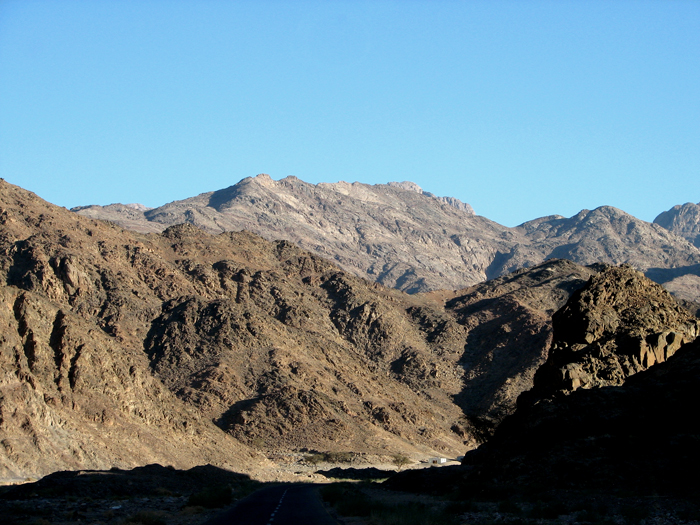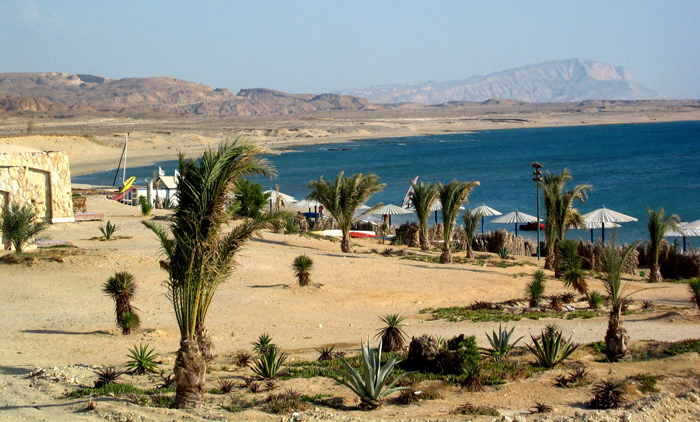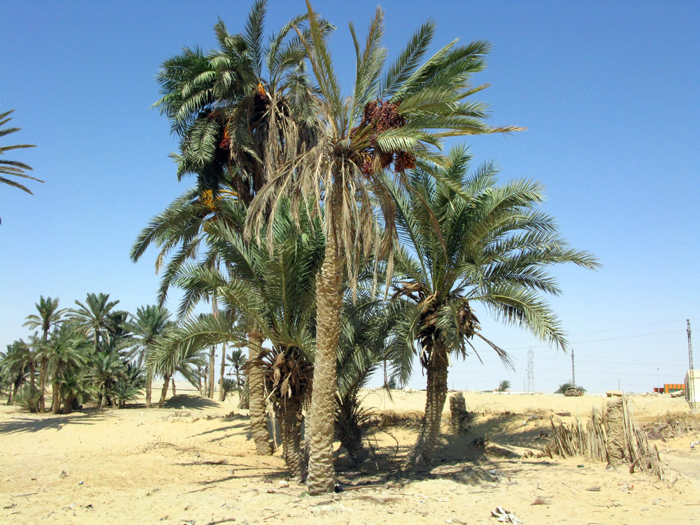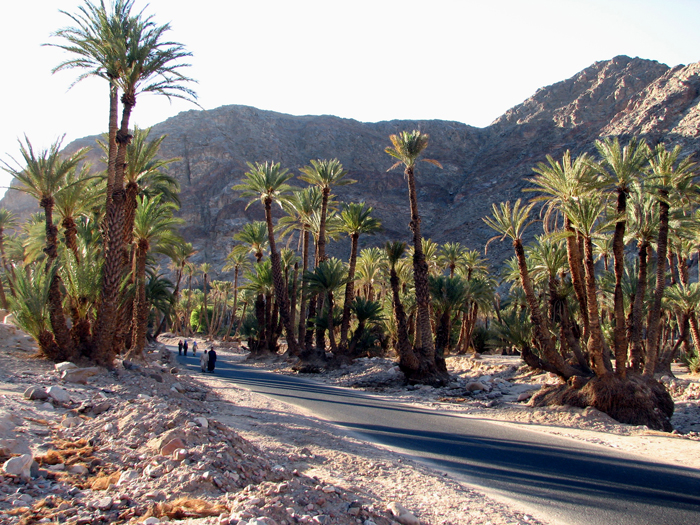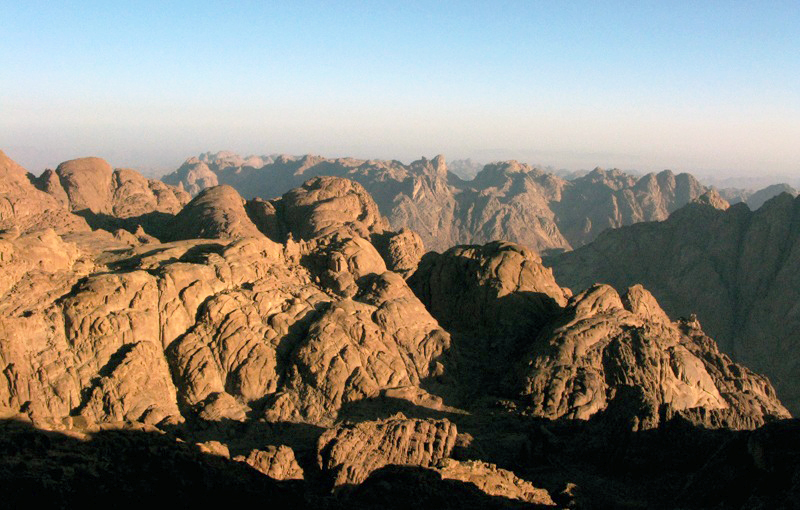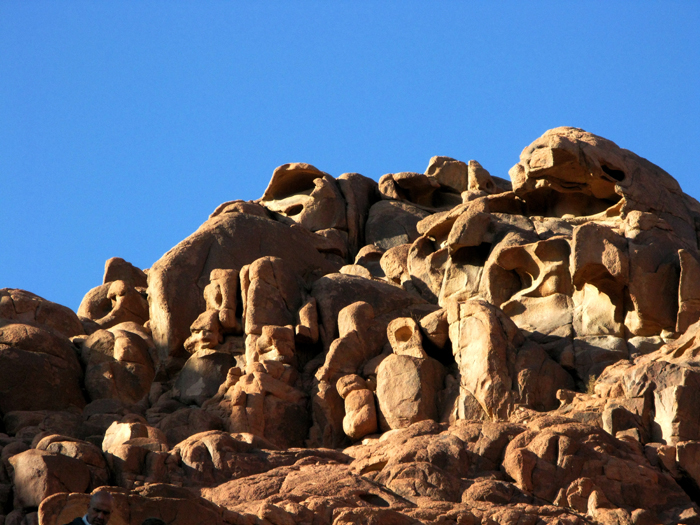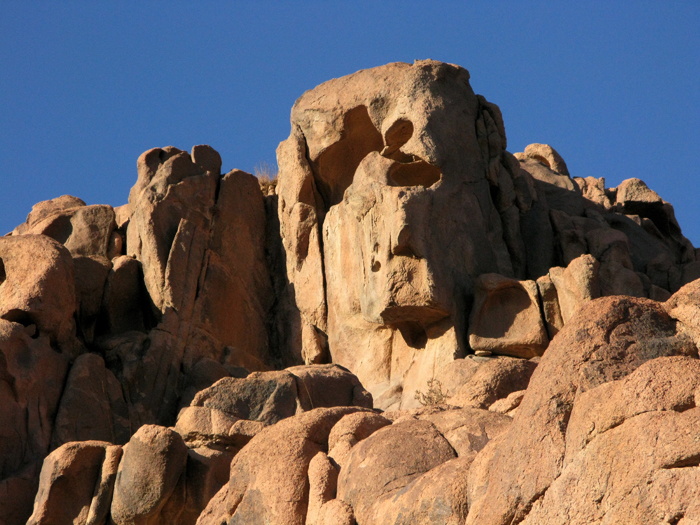The Sinai Peninsula is haunting in its beauty and spectacular in its vistas. As Thomas Brisco notes in his prize-winning atlas,
"Most people visualize the Sinai as a flat, sandy desert and are unprepared for the rich geological diversity nature has granted to this land. True, the Sinai is a desert with little rain and harsh climatic extremes. Vegetation is scarce except for the occasional oasis that lends a splash of green to an otherwise barren landscape. Fantastic displays of multicolored sandstone, deep wadis enclosed by towering cliffs, and majestic pink granite peaks of southern Sinai provide a feast for the eyes." (Holman Bible Atlas, 65.)
As the photos below show, whichever route the ancient Israelites may have taken during the exodus, their journey through the Sinai wilderness could not have been easy or pleasant. The land does not, and could not possibly have, engender a sense of assurance or safety for any traveler, notwithstanding the feast on the eye it may be. Understanding what the Sinai is like in reality adds a new layer of appreciation for the struggles and complaints of the ancient Israelites, and the tremendous demands it must have made on Moses and the other leaders.




